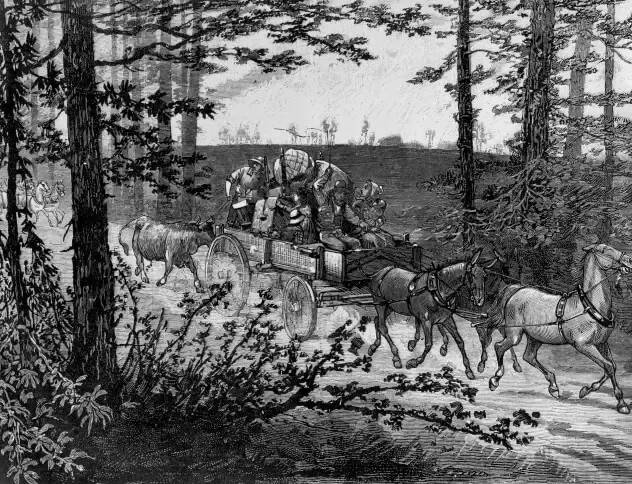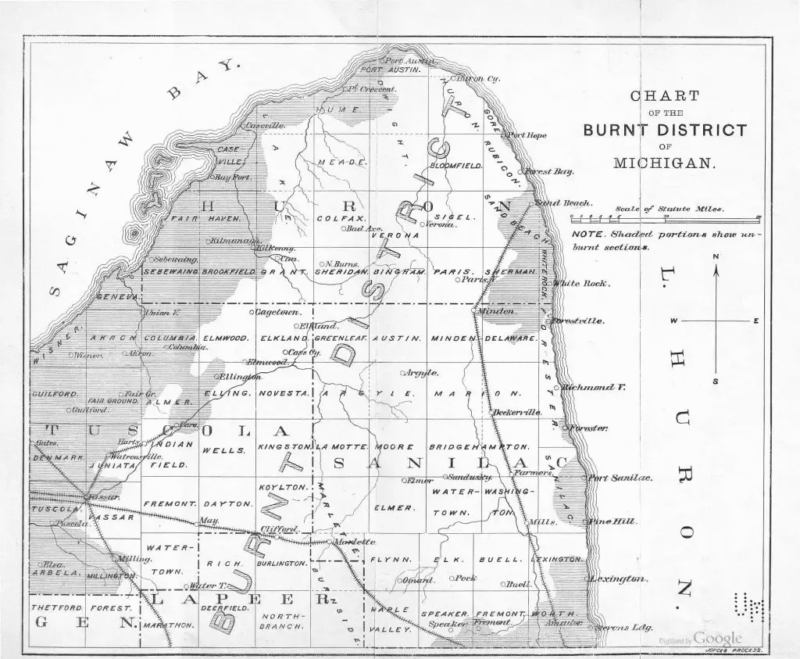The 1881 Fire That Burned Michigan’s Thumb

American Red Cross ArchivesAn illustration of a family fleeing the Thumb Fire.
The summer of 1881 was a dry one in Michigan. In a similar fashion to the 1910 fires, the region experienced hurricane-force winds, drought, and oppressive heat, resulting in the perfect conditions for a dangerous wildfire.
The Thumb Fire, which was named after the peninsula where it burned, began on Sept. 5, 1881, after several weeks of smaller wildfires across the region. In less than a day, it destroyed over one million acres, including the town of Bad Axe.
According to a 2003 report in the Huron Daily Tribune, some 400 residents of Bad Axe rushed to the courthouse as the flames approached, as it was the only brick building in town. Those who couldn’t make it in time jumped into wells in an attempt to save themselves.
One survivor later recalled, “In the courthouse, filled to overflowing, were weeping women, crying children, and grim-faced men… Soon the smoke was so dense that one could not see any distance. Breathing was difficult.”
After sweeping through Bad Axe, the fire continued to burn across Michigan’s Thumb. It killed at least 282 people and left 15,000 others homeless in Huron, Sanilac, Lapeer, and Tuscola Counties.

Wildland Firefighter FoundationA map of the burnt district along the peninsula known as Michigan’s Thumb.
The impacts of the Thumb Fire spread far beyond Michigan, though. Ash from the blaze blocked sunlight along the East Coast, and Sept. 6, 1881, became known as “Yellow Tuesday” in Boston because of the color of the sky.
The Thumb Fire was the first official relief operation of the American Red Cross, which had been founded earlier that same year. Volunteers supplied household items, clothes, and money to those who had been impacted by the disaster.





